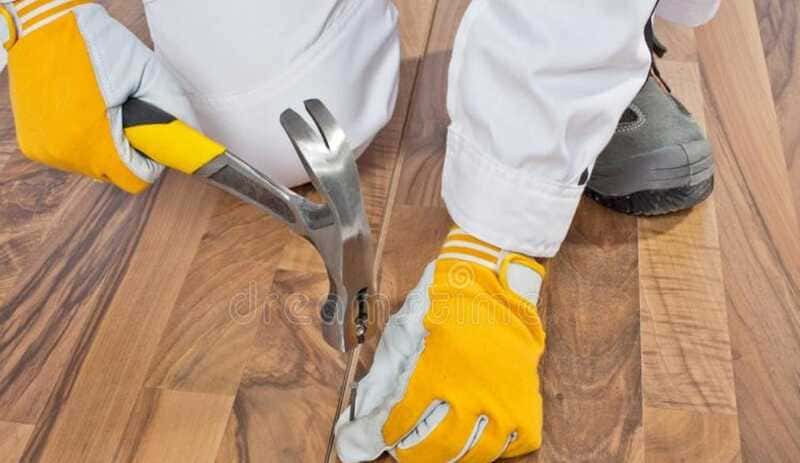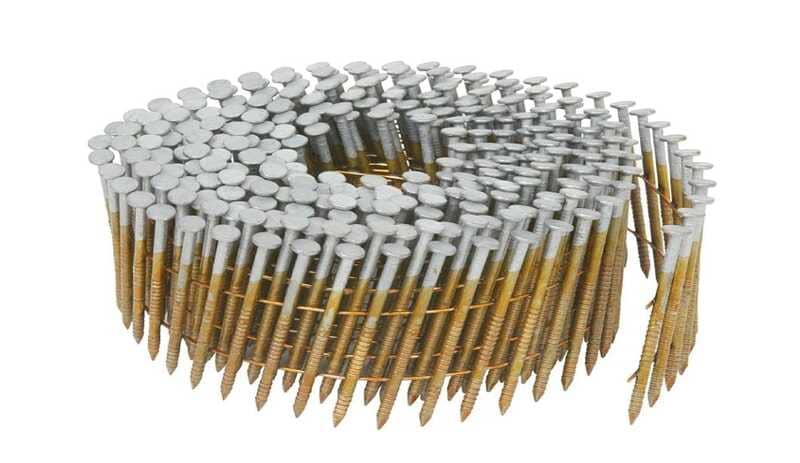Laminate flooring has become a popular choice for those who want an economical and durable alternative to wood or tile in their home or business.
But when it comes time to install laminate flooring, questions arise about the best way to go about it. One of the most common questions is whether to nail down or glue down laminate flooring, and which is the better option. Nailing and gluing are two different installation methods that have their pros and cons.

In this article, we’ll explore the question of whether to nail down or glue down laminate flooring and evaluate the factors you should consider before making a decision.
From durability and cost to the level of difficulty of installation and the amount of time needed to complete the project, we’ll help you understand the pros and cons of each option. In the end, we hope this article provides you with the information you need to make the best decision when installing laminate flooring in your home or business.
Difference between nailing and gluing laminate flooring.
In order to answer the question of whether laminate flooring can be nailed or glued, we must first establish the difference between the two methods.
When installing laminate flooring, there are two main methods that can be used: nailing and gluing. Both methods have their pros and cons and it is important to know the differences between them before making a decision.
Nailing a laminate floor involves attaching the laminate flooring planks to the subfloor with nails. This method is commonly used for floating laminate floors, which means they do not stick to the subfloor.
Nailing a laminate floor can be a good option if you want a durable floor that is easy to replace or repair in the event of damage. In addition, the process of nailing down a laminate floor is relatively quick and easy, which can make installation more economical. However, nailing a laminate floor can be noisy and requires a solid wood subfloor for proper fastening. In addition, nailing down a laminate floor can be more difficult if you have a small or irregular space to install it.
On the other hand, gluing a laminate floor involves attaching the laminate flooring planks to the subfloor with adhesive. This method is commonly used for glue-down laminate flooring, which means that the laminate flooring is adhered directly to the subfloor.

Gluing down laminate flooring can be a good option if a quieter floor is desired, as the adhesive can help reduce impact noise. Also, gluing down a laminate floor may be easier if you have a small or irregular space to install it. However, gluing down a laminate floor can be more expensive than nailing it down and may require more time for installation. In addition, if you need to replace or repair a glued-down laminate floor, it can be a difficult and costly process.
Is it advisable to nail or glue a laminate floor?
In order to know whether to nail down or glue down a laminate floor, it is essential to decide which of the two methods to use, and for this, we must analyze several factors.
Deciding whether to nail down or glue down a laminate floor is an important decision when installing laminate flooring. Both methods have their advantages and disadvantages, and it is important to consider a few factors before choosing one.
In terms of durability, both options can work well if done correctly. Nail down laminate flooring can be a good option if you are looking for a strong hold, while glue down laminate flooring can be a good option if you are looking for a quieter floor. However, keep in mind that nailing can be noisy and can cause damage to the subfloor, while gluing may require meticulous preparation of the subfloor to ensure proper adhesion.
Cost is also an important factor to consider. Nailing laminate flooring can be more economical, as it requires less material and tools than gluing. However, keep in mind that nailing may require more time and labor, which can increase the overall cost of the project. On the other hand, gluing down laminate flooring can be more expensive due to the cost of adhesive and subfloor preparation, but it can be faster and easier to install.
Another factor to consider is ease of installation. Nailing down a laminate floor can be more difficult if you have a small or irregular space to install it, and may require special skills and tools. On the other hand, gluing down a laminate floor may be easier in small or irregular spaces, and may require fewer tools and skills.
How to nail or glue down laminate flooring.
Knowing whether to nail or glue down a laminate floor can be a challenging task, but nailing or gluing down the floor can be an effective way to secure it. Before beginning, it is important to properly prepare the subfloor to ensure a proper installation.
If you choose to nail down the laminate flooring, you will need a hammer and special laminate flooring nails. First, the floorboards must be measured and cut to fit the space properly. Then, the floorboard should be put in place and, using the hammer, the special nails should be driven through the board and into the subfloor. It is important to drive the nails evenly to avoid damaging the floor.

If you prefer to glue down the laminate flooring, you will need a special adhesive for laminate flooring and a notched trowel to apply it. First, prepare the subfloor, making sure it is clean and dry. Next, the adhesive should be applied to small sections of the subfloor, using the notched trowel to evenly distribute the adhesive. Next, the laminate flooring planks should be put in place, pressing them firmly to ensure proper adhesion. It is important to work in small sections to prevent the adhesive from drying before the boards are laid.

In general, both nailing and gluing laminate flooring can be effective methods of installation. However, it is important to follow the manufacturer’s instructions and take into account specific installation conditions, such as subfloor type and moisture conditions, to ensure proper installation. If you are uncertain about the installation, it is advisable to seek the help of a professional. With proper care, a properly installed laminate floor can last for many years and provide a stylish, long-lasting look for your home or business.
How long does a nailed or glued laminate floor last?
The life of a nail-down or glued-down laminate floor will depend on several factors, such as the quality of the laminate flooring, the subfloor, the type of installation and proper maintenance. In general, a properly installed and cared for laminate floor can last for many years.
A nail-down laminate floor can last longer than a glued-down laminate floor because the nails help secure the floorboard in place. In addition, nails can allow the board to expand and contract naturally, which can reduce the risk of moisture damage.
On the other hand, a glued-down laminate floor may be more durable in areas with high humidity or where there are extreme temperature changes, as the adhesive can help prevent expansion and contraction of the floor.
It is important to note that the durability of a laminate floor will also depend on proper maintenance. It is recommended to regularly clean the floor with a vacuum cleaner or soft broom to avoid scratching or damaging the surface. In addition, it is important to avoid excess moisture and the use of abrasive cleaners, as they can damage the laminate floor over time.
In general, a nail-down or glued-down laminate floor can last 10 to 25 years or more, depending on the factors mentioned above. If properly cared for, a well-installed laminate floor can provide a stylish and durable look for your home or business for many years.
Precautions to take into account when nailing or gluing laminate flooring.
Before nailing or gluing down a laminate floor, it is important to take certain precautions to ensure a safe and durable installation.
First, it is important to make sure that the subfloor is clean, dry and level before installing laminate flooring. Any unevenness in the subfloor can cause problems in the future, such as gaps or bulges in the floor.
Secondly, it is important to make sure that the laminate flooring gets used to the surrounding conditions before installation. The floor should be left in the room where it is to be installed for at least 48 hours to allow it to adapt to the temperature and humidity of the environment.
Third, it is important to choose the right tool for nailing or gluing the laminate flooring. If the floor is to be nailed down, it is recommended to use a laminate flooring hammer and special nails for laminate flooring. If the flooring is to be glued, it is recommended to use a special laminate flooring adhesive.
Fourth, it is important to follow the manufacturer’s instructions for installing laminate flooring. This may include the use of a carpet pad, the laying of the first board and the correct alignment of adjacent boards.
Finally, it is important to maintain adequate spacing between planks to allow for natural expansion and contraction of the laminate flooring. If not enough room is left for expansion, the laminate flooring may split or bulge over time.
In general, taking these precautions can help ensure a safe and durable installation of laminate flooring. It is always important to follow the manufacturer’s instructions and, if necessary, seek the help of a professional to ensure that the flooring is installed correctly and safely.
